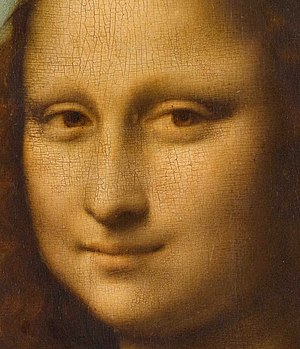Cangiante: Difference between revisions
Merlion444 (talk | contribs) Changed speedy to cleanup |
No edit summary |
||
| Line 1: | Line 1: | ||
{{cleanup}} |
{{cleanup}} |
||
[[Image:MonaLisa sfumato.jpeg|thumb|300px|right|Detail of the face of [[Mona Lisa]] showing the use of sfumato, particularly in the shading around the eyes.]] |
|||
'''New article name''' is Cangiante |
'''New article name''' is Cangiante |
||
Revision as of 14:49, 8 November 2009
You must add a |reason= parameter to this Cleanup template – replace it with {{Cleanup|reason=<Fill reason here>}}, or remove the Cleanup template.

New article name is Cangiante
Cangiante is one of the four canonical painting modes of the Renaissance (the other three being Unione, Chiaroscuro, and Sfumato).[1] It is characterized by the painter's changing to a lighter hue when the original hue cannot be made light enough or, conversely, changing to a darker hue when the original hue cannot be made dark enough. The painter may change, for example, from the color yellow to the color red (irregardless of the object's actual color)when painting shadows on a yellow object simply because the yellow he has to work with cannot be made dark enough to render shadows on that object (and the red can).
The word itself derives from the Italian 'cangiare' ('to change').
References
- ^ Hall, Marcia (1994). Color and Meaning: Practice and Theory in Renaissance Painting. Cambridge University Press. ISBN 978-0521457330.
